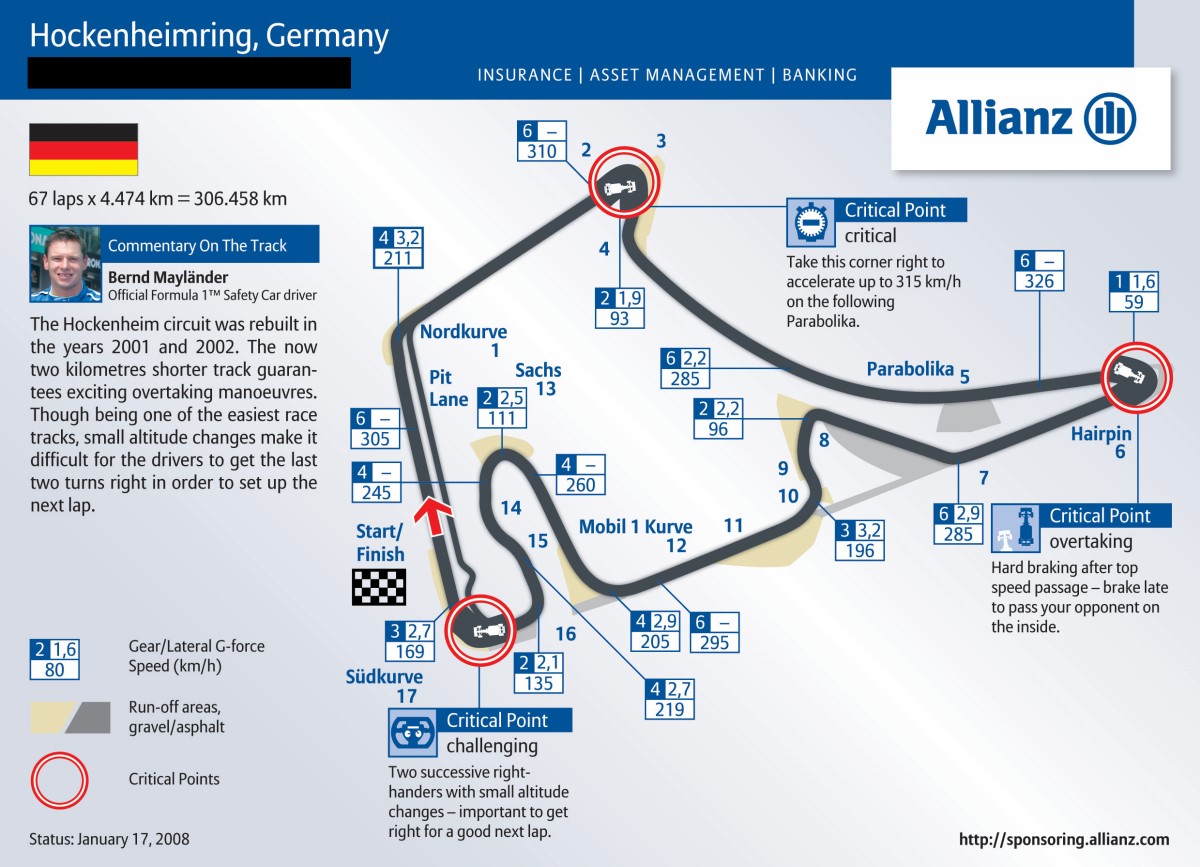Hockenheim: Circuit guide
 |
| Hockenheim |
The revisions to the Hockenheimring in recent years have transformed what was once a flat out burst through the forests into a medium downforce circuit, with the teams having to balance the demands of a long back straight and a low-speed stadium section at the end of the lap. The team therefore has to adopt a compromise with the set-up. The benefit of such a diverse track usually gives an exciting race with plenty of overtaking opportunities.
Aerodynamics
Like the latest generation of Hermann Tilke tracks, Hockenheim is characterized by long straights followed by slow corners and hairpins, designed with overtaking in mind. With such a long back straight, a good top speed is essential to fend off competitors in the race, and could increase the important of F-ducts, but this has to be balanced with the grip needed in the medium and low-speed parts of the lap. Downforce settings are therefore a compromise, requiring the team to adopt a medium downforce set-up and leaving the drivers short of grip in the low-speed stadium section, but allowing a reasonable top speed on the straights.
Brakes
The circuit is one of the hardest tests of the year on brakes, being similar to the demands of Bahrain. Braking stability is vital, especially into the hairpin at turn six, where it is easy to lock a wheel, and even more challenging following the removal of electronic braking assistance. The teams therefore play close attention to finding the optimum braking and cooling solutions, which was one of the priorities at the pre-grand prix test.
Suspension
The long straights and low-speed corner mix of Hockenheim requires contrasting suspension set-ups. Mechanically, teams are able to run the cars quite soft as there are no significant high speed changes of direction on the circuit. Front to rear, teams run a forward mechanical bias, i.e. a stiffer front end in order to get good traction out of the slow and medium speed corners and keep the rear stable under braking. Indeed, with the braking zone into turn six being the main passing opportunity, braking stability is something teams work hard to get right.
Tires
The demands on the tires are quite severe and so Bridgestone will supply the hard and medium options from its range. The stress does not come from the lateral load of the corners but is due to the traction zones and heavy braking required at this circuit. Hockenheim in July is also a place where we can expect high track temperatures and, coupled with the heavy traction demands, the team needs to keep a close eye on wear rates for the rear tires and beware of blistering which will make the car unstable.
Engine
The engine requirements at Hockenheim are not as demanding as in the past, but, with 63 percent of the lap spent on full throttle, it's still a challenging workout and about average for the season. With a lack of high-speed corners, the main demands come from the long back straight. Good torque is essential and so the engine needs to work well at low revs to help the cars get a good exit out of the low-speed corners. The potential for high temperatures in Hockenheim also means the teams must pay attention to cooling to avoid overheating, but the latest generation of V8 engines are capable of running at peak revs in high temperatures.
